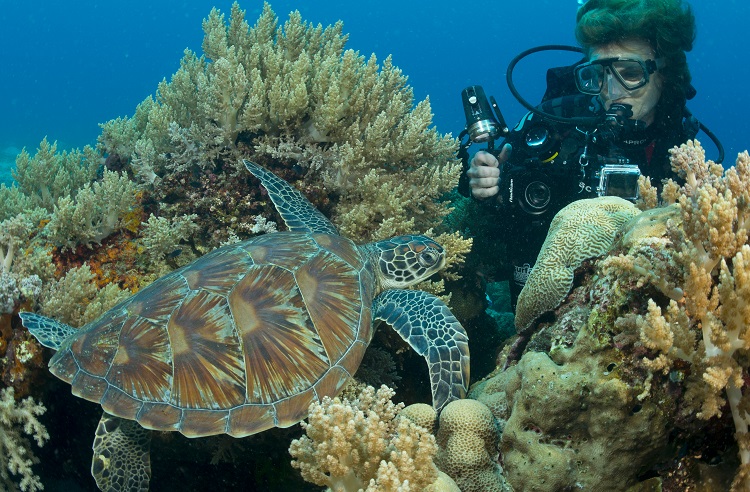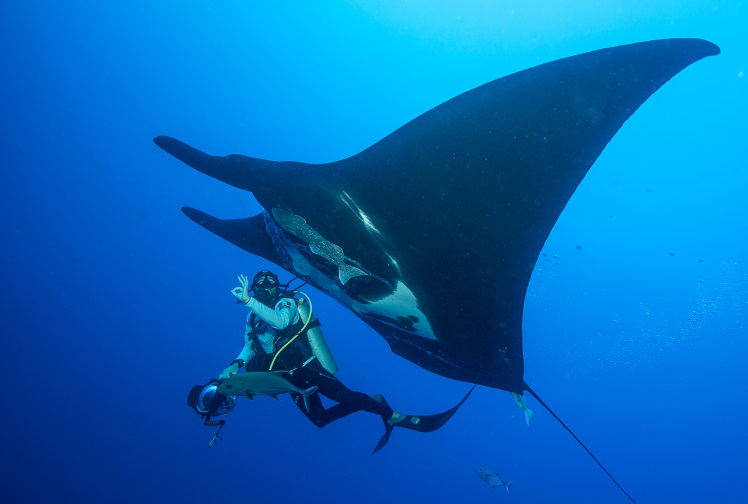Pygmy Leatherjacket in Soft Coral
02-Mar-2011 Back to Image Gallery
These little leatherjackets are really cute and are quite common at many NSW dive sites. The trick is to seek out the more colourful ones and contrast them against a pretty background. This is much easier at Nelson Bay with its abundance of colourful sponges and soft corals. Once you have your subject in frame and in focus with your delightful backdrop of coral you should compose with the `rule of thirds’ in mind but wait, don’t shoot yet! You also want the tail displayed, not closed, the dorsal spine erect and the subjects eye engaged with yours. This should create the `WOW’ factor! How good are you! This will happen for just 1/125th of a second!
Photo Data: Location: Fly Point, Nelson Bay, NSW, Australia. Genre: Macro. Photo Data: Nikon D200, Nikkor 60 MM lens, Seacam Housing, Dual Seacam Strobes, Manual Exposure Mode. ISO 100 Exposure f32 @ 1/125th second. Image by Kevin Deacon
Photo Hints: With underwater action shots the diver must have excellent buoyancy and manoeuvrability. You must be able to handle and trigger the camera system with one hand; your other hand will be needed for yourself. The camera system should be neutrally buoyant, just like you. I use buoyancy arms to achieve this. I also use a divers probe on a retractor so I can maintain contact with the bottom without crashing into it disturbing the silt, destroying delicate corals or putting my hand on scorpionfish, urchins etc! Always select an aperture setting that will give you your best depth of field to ensure the polyps on the soft corals are also in focus. On my lens this is F32. Note the polyps at the very rear are beyond the range of my depth of field.
Interesting Facts: Pygmy Leatherjackets, Brachaluteres jacksonianus are only 5 - 9 centimetres in length. I have seen them at night gripping onto a piece of seagrass as it sways back and forth in the surge. I assume it’s their way of sleeping and waking up in the same place! I have also observed another species of leatherjacket doing this with a sea tulip.



